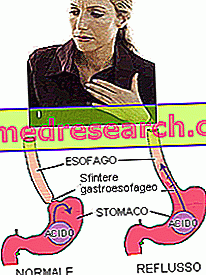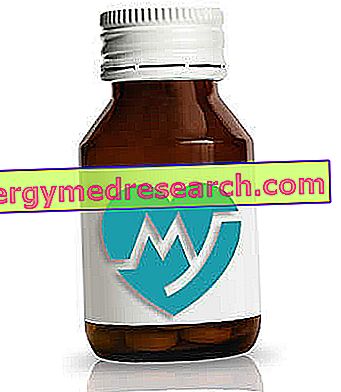Watch the video
X Watch the video on youtubeHeartburn, acidity and regurgitation: these are the typical symptoms of gastroesophageal reflux, a very common disorder that is often treated with a little lightness. Many people in fact suffer from reflux without knowing it, others tend to trivialize the symptoms, others still decide to face it with their own means, by changing their lifestyle or taking antacid drugs.
What is gastroesophageal reflux? Gastroesophageal reflux diseaseGastro-oesophageal reflux causesSymptoms, incidence and complicationsResubjection and risk of cancer oesophagosisDiagnosis, treatment and treatmentGastroesophageal reflux nutritionDiet and gastroesophageal reflux
What is gastroesophageal reflux?
"Involuntary and unconscious passage of a part of the gastric contents into the esophagus, without sharing the gastric and abdominal muscles"
The gastroesaophageal reflux is, substantially, the ascent of the acid content into the esophagus, that 25-30 cm long channel that connects the mouth with the stomach.

Gastroesophageal reflux occurs when the sphincter of the same name releases at the wrong time, allowing the gastric contents to pass upwards (see figure). By virtue of its acidity, this material irritates the esophageal mucosa, triggering the typical symptoms of the disorder.
This condition becomes pathological when the reflux occurs too often or when the gastric content is excessively acid.
Gastroesophageal reflux disease (GERD)?
In normal conditions the gastric contents flow back into the esophagus in modest quantities and in an episodic manner. Only when this reflux becomes important in terms of frequency or severity of symptoms is the so-called gastroesophageal reflux disease (GERD) established.
GERD is a benign disease but can be a cause of recurrent chronic disorders that interfere with the normal quality of life. Today we can speak of illness only when these symptoms (regurgitation and retrosternal burning) appear at least once a week.
Causes
The most common cause of gastroesophageal reflux disease is the altered functionality of the sphincter of the same name. As we have seen, when this species of valve does not function properly the gastric chyme can rise upwards irritating the esophagus.

If the gastroesophageal sphincter did not exist, during this exercise the gastric contents, pushed by the force of gravity, would be free to go up along the esophagus
The second most important cause is slowed gastric emptying. When we eat the chopped and blended food with saliva it reaches the stomach where it can stay for longer or shorter periods. The greater the period of gastric permanence of food, the greater the probability that gastroesophageal reflux will occur.
There can also exist motility problems of the esophagus; in these cases there is an alteration of its ability to bring the food down from the throat to the stomach.
Even salivary changes can predispose the subject to reflux disease and its complications. In fact, remember that the saliva is slightly basic and that, being also rich in bicarbonates, it is able to buffer small amounts of acid accidentally ascended along the esophagus. It is certainly no coincidence that one of the typical symptoms of reflux disease is hypersalivation, a method adopted by the body to defend itself against acids.
If for some reason the salivary pH lowers this protection is less and makes the esophagus more susceptible to acid attack.
Together with saliva, the esophageal peristalsis helps to protect the esophagus by removing the physiological acid refluxes.
Gastroesophageal reflux - Video: Causes, Symptoms, Cures
X Problems with video playback? Reload from YouTube Go to Video Page Go to Wellness Destination Watch the video on youtubePregnancy, due to the pressure exerted by the fetus, compresses the stomach facilitating the rise of acid into the esophagus. Similarly in the obese, the massive presence of abdominal fat increases the gastric pressure favoring reflux.
Smoking is also a very important risk factor since it alters the salivary composition, the functionality of the gastroesophageal sphincter and increases the acid secretion of the stomach.
Anxiety and stress, although they are hardly the real culprits of reflux disease, can certainly exacerbate the symptoms.
Finally it is important to remember the hiatal hernia which, especially if large, is very often associated with gastroesophageal reflux disease.



